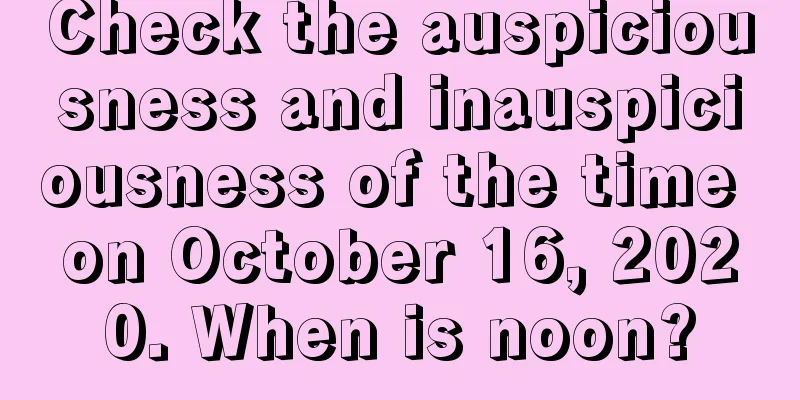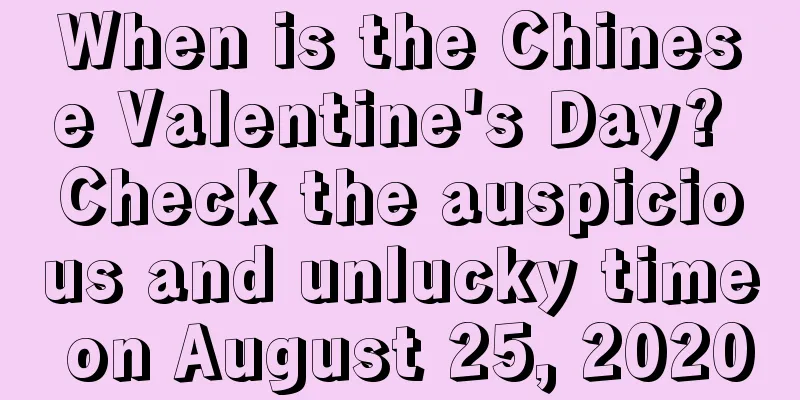What are the five colors of the five-colored thread for warding off evil spirits? What is the origin of the five-colored thread?

The five-colored thread is a thread of five colors, also known as five-colored rope, five-colored thread, five-colored rope, and five-colored silk. So, what are the five colors of the five-colored thread for warding off evil spirits? What is the origin of the five-colored thread? If you encounter evil spirits, your fortune will suddenly turn bad. At this time, you can choose some auspicious Feng Shui items to resist the influence of evil spirits on yourself. Shuimo.com has prepared some articles about warding off evil spirits, come and check them out!What are the five colors of the five-colored thread for warding off evil spirits?The five-colored thread is also called the five-colored thread or the five-colored longevity thread. Tying a five-colored longevity thread is an ancient custom that has existed since the Song Dynasty. The traditional five-color thread is a woven thread composed of five colors: red, yellow, white, blue and black.Five-colored thread is a lucky charm commonly used in Buddhism, Taoism and among the people. In Buddhism, the green, red, yellow, white and black colors of the five-colored threads symbolize the five methods of Tathagata Buddha - faith, diligence, mindfulness, concentration and wisdom. In Buddhist scriptures, the five-colored thread also represents the Five Buddhas of the Vajra Realm. When you wear the five-colored thread, you will be illuminated by the Buddha's light of the Five Great Buddhas: Amitabha in the west, Ratnasambhava in the south, Amoghasiddhi Buddha in the north, Ashin Buddha in the east, and Vairocana Buddha in the center, and you will be protected by the Vajra Five Great Buddhas. What is the origin of the five-colored thread?The five colors of the five-colored rope represent the five elements. The Han Dynasty believed in the theory of the five elements and yin and yang. The five colors represent the five directions, which are mutually reinforcing and restraining, and have the mysterious effect of exorcising evil and welcoming good luck.Green belongs to wood and represents the east, red belongs to fire and represents the south, yellow belongs to earth and represents the center, white belongs to gold and represents the west, and black belongs to water and represents the north. Animals are used as symbols: the Azure Dragon in the east, the Vermillion Bird in the south, the White Tiger in the west, the Black Tortoise (turtle and snake) in the north, and the Yellow Dragon in the center, all of which are spiritual creatures. The symbolic meaning of the rope being able to ward off evil and avoid plague is far more obvious than its actual function, because up to now there is no specific explanation as to why these colors can ward off disasters and diseases. It can be seen that this is a magical object with magic and symbolism in folk beliefs. It is obviously different from the medicinal functions of mugwort, calamus, realgar, etc. used in festivals. It is purely a need for folk beliefs to seek good luck. During the Liao Dynasty, women of northern ethnic groups tied five-colored ropes on their arms on the Dragon Boat Festival, commonly known as the "Hibiscus Knot". Women of the Liao Dynasty tied the five-colored ropes into human-shaped hairpins and wore them in their hair buns, also known as the "Long Life Thread". The emperors of Liao and Jin wore five-colored ropes and gave five-colored ropes to all their ministers and subordinates, which were also called longevity ropes. People in the south of the Yangtze River fold paper into diamond-shaped squares and then wrap them with colorful ropes. They give them to each other during festivals. Women wear these festival ornaments, called "襞方", on their chests to show their achievements in women's labor. These customs have little to do with avoiding war and evil spirits or getting rid of disease and plague, but are more about blessing and celebrating birthdays from a positive perspective. |
>>: How is the fourth day of the fifth lunar month in 2022? Can the funeral be held?
Recommend
What are the taboos and taboos on the 27th day of the sixth lunar month in 2018?
The wind and rain in June, drop by drop, hit the ...
Is it possible to sign the contract on July 24, 2019 of the lunar calendar?
There are twelve months in a year, and the first m...
What are the do's and don'ts on the 27th day of the eighth lunar month in 2017?
August ushers in the golden autumn season. This i...
What is the fate of a baby boy born on March 30th of the lunar calendar in 2022? Is he lucky?
The third month of the lunar calendar has been a m...
Is it suitable to set up a bed on the third day of the fifth lunar month in 2020? Analysis of the Feng Shui of setting up a bed
Introduction: It is necessary to choose an auspici...
When is the fifteenth day of the first lunar month in 2017? Analysis of the position of the God of Happiness on the 15th day of the first lunar month
Introduction: The God of Joy symbolizes all festiv...
2020 leap April 4th (Lunar Calendar) - Check the location of the God of Happiness
The direction of the God of Joy can be applied to...
How is the twelfth day of the sixth lunar month in 2022? Is it an auspicious day?
Some days are auspicious days, while some days are...
Lunar calendar August 12, 2018, is it a good day?
It is the eighth month of the lunar calendar, the...
What food tips does Xiaoxue have? Precautions for health preservation and nourishment during winter in 2020
Xiaoxue, as the name suggests, refers to the time ...
What day is May 22nd in the lunar calendar 2018? What month and date is it?
The fifth month of the lunar calendar is consider...
What are the do's and don'ts on June 11th of the lunar calendar in 2021? Can I go for a haircut?
The sixth month of the lunar calendar, which is be...
What time will the Light Snow fall in 2021? Which solar term is Xiaoxue? How to calculate the time of Xiaoxue?
The 24 solar terms are arranged according to the d...
Is July 13, 2020 a good day for funerals and burials? Analysis of the hexagram on August 31
Introduction: Funerals generally require an auspic...
Can I get married on the sixth day of the seventh lunar month in 2017? Is it suitable for engagement and wedding banquet?
1. What day is the sixth day of the seventh lunar...









